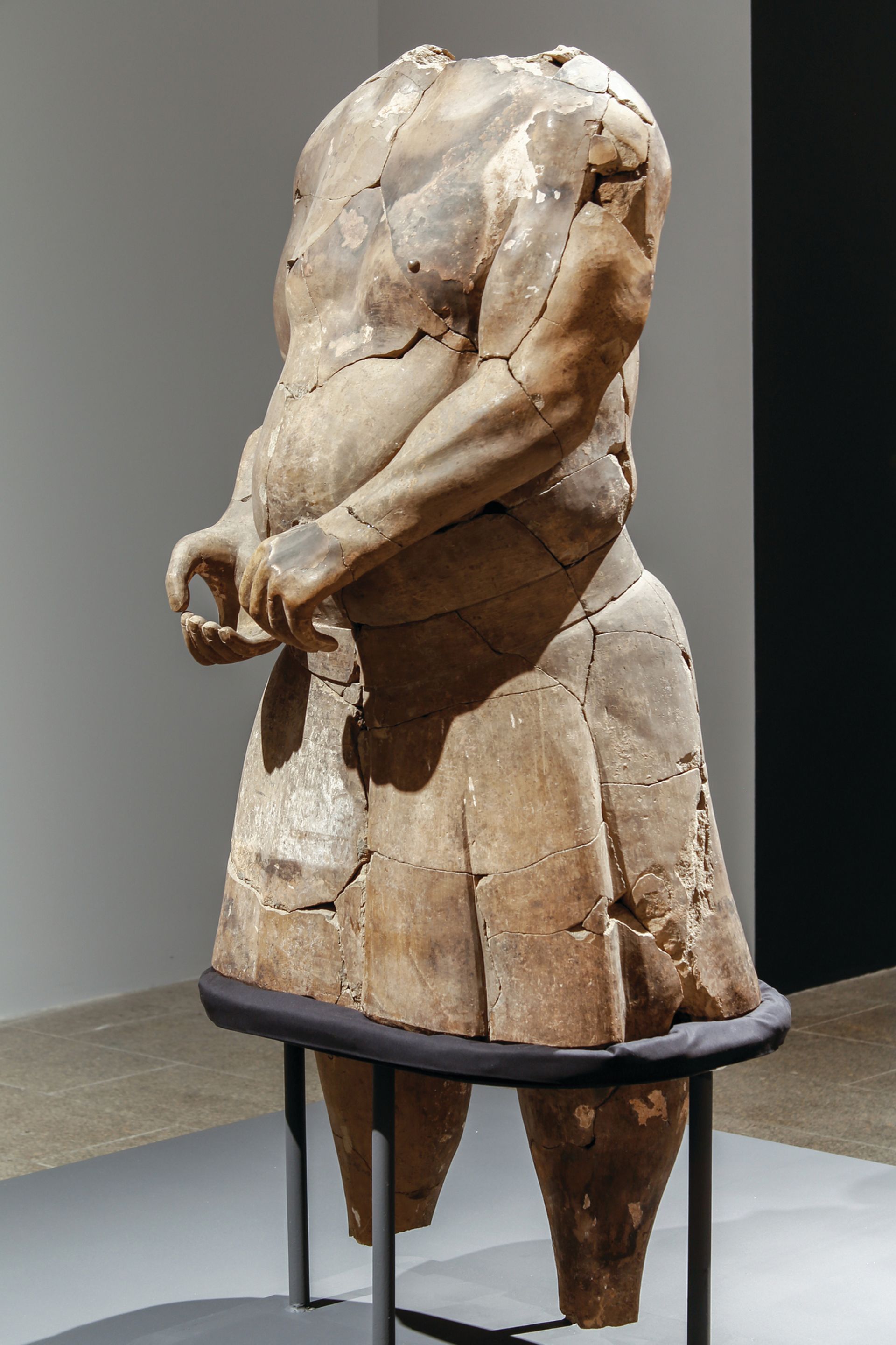As mummies are to ancient Egypt, so the terracotta army is to ancient China—a way to make the mysterious past tangible to modern eyes. Since more than 7,000 life-size terracotta warriors were first discovered in 1974 in three burial pits less than a mile from the funerary compound of the first emperor of China, Qin Shi Huang (reigned 221-210BC), they have surprised and dazzled the world. Now, a group of them are in New York.
The exhibition Age of Empires: Art of the Qin and Han Dynasties at the Metropolitan Museum of Art—which presents around 160 works borrowed from 32 Chinese institutions—does not disappoint. Four of the life-size soldiers line up at the entrance to greet visitors. The helmet, armour and crossbow nearby suggest how the soldiers may have been equipped. Yet the real treat is the torso of a bare-chested strongman unearthed from a burial pit within that funerary compound in 1999—more than two decades after the terracotta army had been excavated.
The discovery has generated heated debate. Why would a group of half-naked figurines be part of the complicated funerary design for the first emperor? An early answer to the riddle was that they must have been acrobats for the emperor’s amusement. A more recent proposal is more well-grounded: that these figurines, which include both heavy and lean body types, are soldiers performing physical exercises to strengthen for battle.
Still, the discussion remains unsettled and it is one of several to emerge in the past 50 years with new archaeological evidence, which has partly motivated the current show. Artisans in ancient China were more interested in zoomorphic designs than anthropomorphic motifs. Art historians used to believe that the introduction of Buddhist art from India from the first century AD gave rise to the sculptural representation of human figures in Chinese art, but the excavation of the terracotta army dispelled that belief. Scholars have since considered the life-size terracotta army as indigenously Chinese, especially because they were mass-produced in modular fashion.

The discovery of the half-naked figurines put the indigenous perspective to the test. A torso like the strongman’s was familiar in the Greco-Roman world, but not in ancient China. Until halfway through the 20th century, Chinese culture had been very conservative in regard to the body, hiding it in daily life and in art. Accordingly, artisans in ancient China exhibited their talents more in depicting clothing than in the underlying body. It is thus striking to see something like the strongman.
The artisan who made the figurine not only handled anatomy well; he also captured its sturdy, muscular physique, especially the bulging muscles of his chest and arms, his hefty belly and brawny hips. Some figurines from the burial pit that are not in the exhibition even stand in the contrapposto pose that marked a significant development in Greek sculpture after 480BC. The pose, in which weight rests on one leg, freeing the other, allows a sculpture to appear more dynamic.
No doubt figurines like the strongman were novelties in ancient China, but explaining their emergence has proven challenging. Some scholars could not help but put forward the idea of Hellenistic inspiration. Others, however, are sceptical because there is so far no reliable evidence from this period in central Asia to account for the influence of large-scale figurative art from the west. Others still are ambivalent about the dichotomy between Chinese origin and outside influence: why must an innovative way of representing the human body come from without, and not from within the culture that made it?
The controversy aside, China was interacting with the outside world long before the first emperor. At the Met, objects displayed on the walls that flank the strongman illuminate this interaction. A ceramic cup from between the fourth and third centuries BC has rare blue and purple glazes invented by the Chinese, but its tall, cylindrical shape is reminiscent of cups used in the eastern Mediterranean. More material evidence, dated to the Han Empire that succeeded the Qin, follows in the rest of the exhibition, like a silver box retrieved from a princely tomb in 2010. The lobed design on the silver container and its lid had been a decorative motif popular in West Asia since the 6th century BC.
One of the contributions of the show is to turn attention away from the Silk Road (which the Han Empire has traditionally been credited with opening to the West) to long-overlooked overseas trade, which was recorded by a Chinese court historian in the early second century. Archaeological finds in the past two decades at a Han port officially established in 111BC attest to early trading activities in the South China Sea and the Indian Ocean.
One of the showcases in the last room of the exhibition displays some astonishing discoveries: several strings of beads made from carnelian, amethyst, aquamarine, beryl and rock crystal, which likely arrived at the Han port from India. These ornaments are small but significant—a testament to China’s position as a crossroads in the ancient world.
• Lillian Tseng is associate professor of East Asian art and archaeology at the Institute for the Study of the Ancient World at New York University
• Age of Empires: Chinese Art of the Qin and Han Dynasties, Metropolitan Museum of Art, New York, until 16 July

